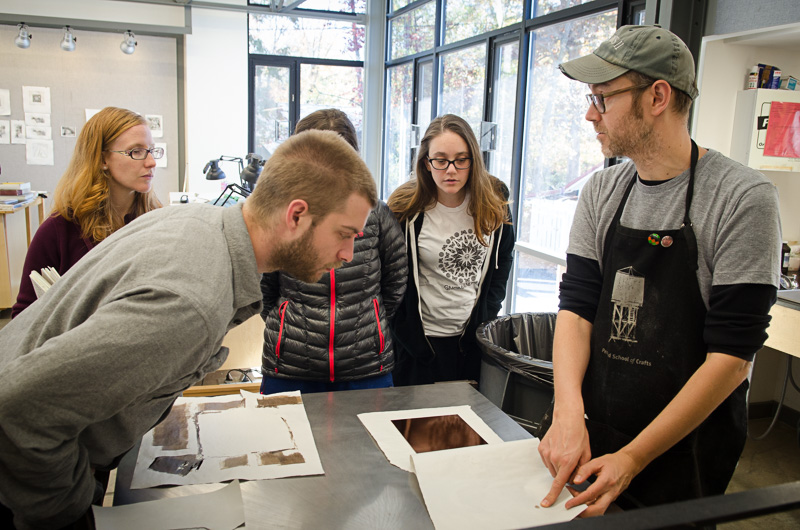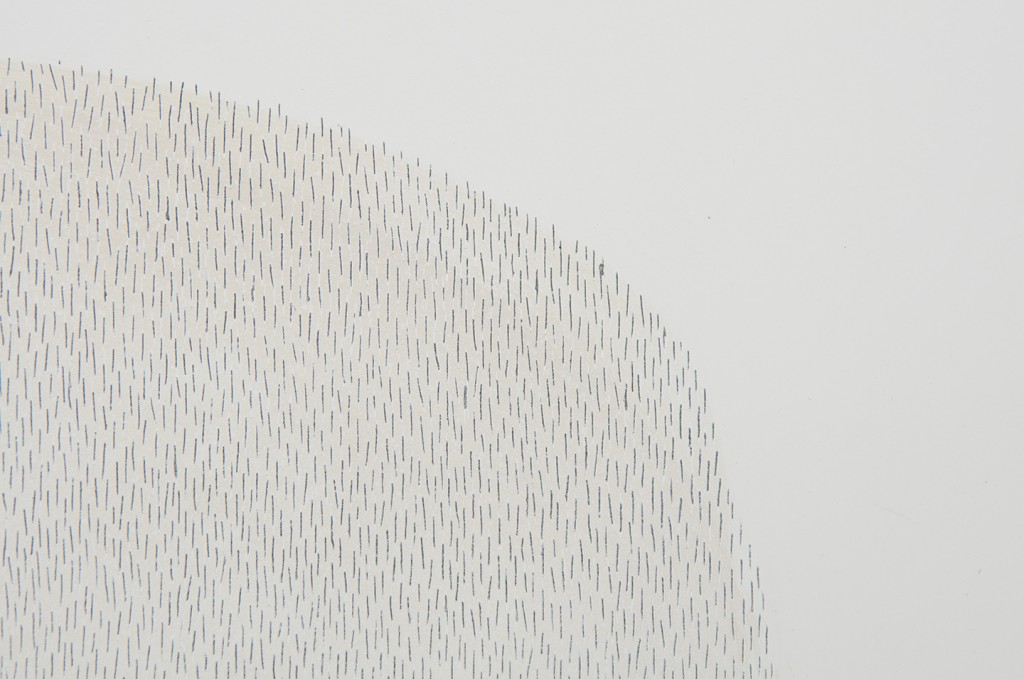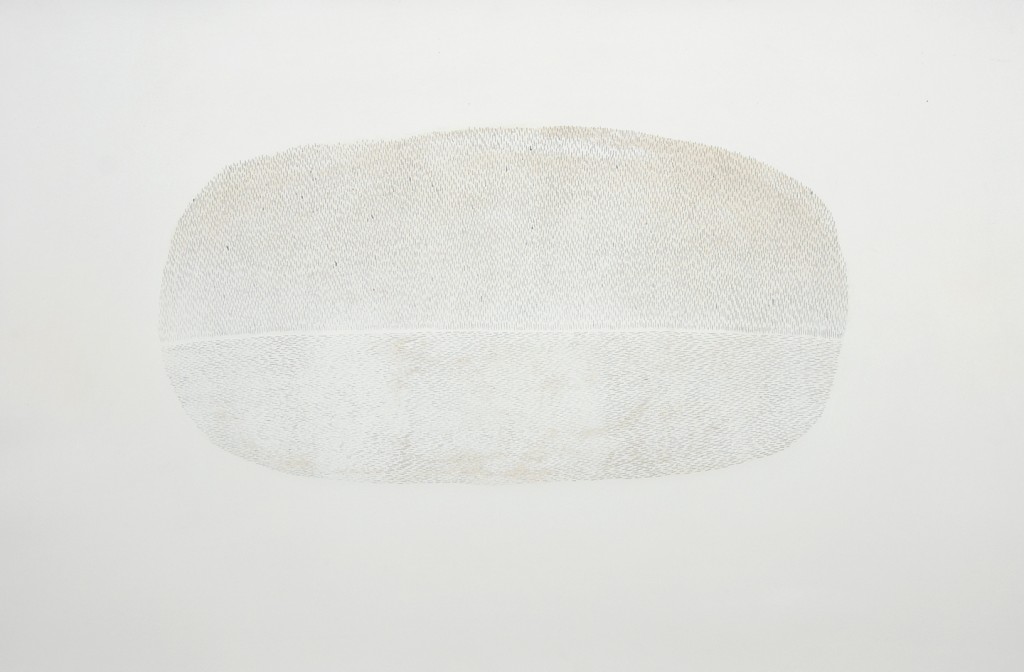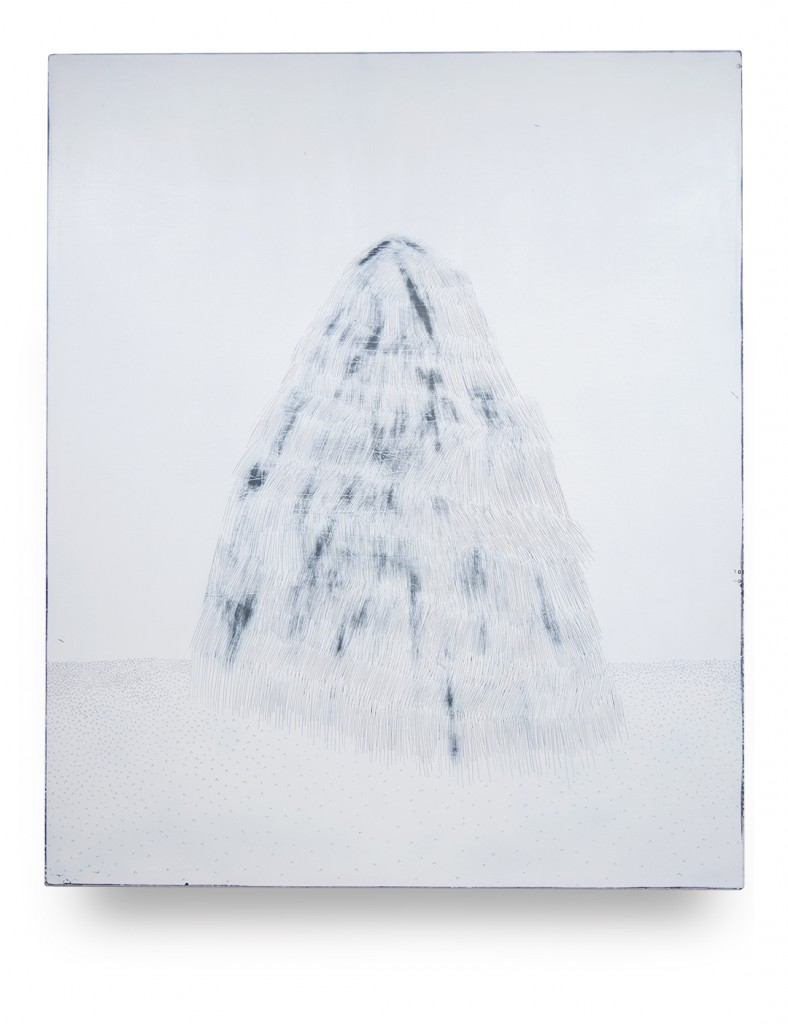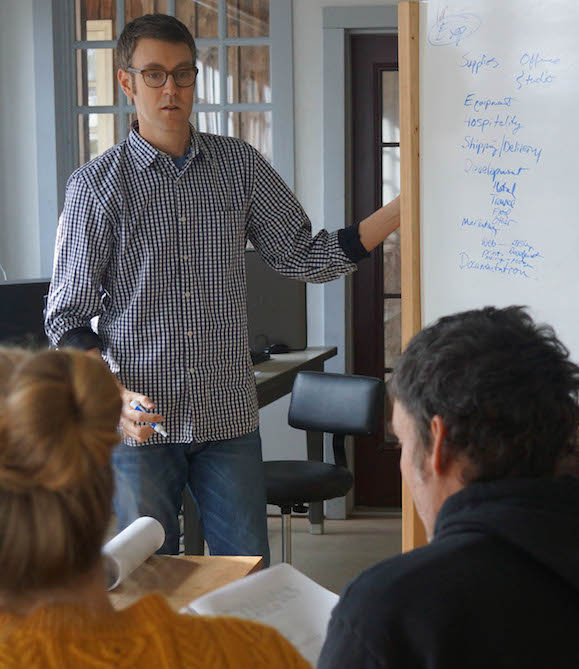
Artist, master printer, publisher, creative services consultant, and non-profit arts administrator Phil Sanders was at Penland in January to teach Business Time*, a week-long class he designed to “help artists fully understand and explore the business of making and selling their work through setting realistic short, mid, and long-term goals.” We stopped by to listen in–just as the class was beginning to talk about accounting. They began by generating a list of the expenses that artists have. (“What else do you spend money on?” asked Phil. “Tacos!” answered one artist. Probably the most lively accounting class of all time.)
The workshop covered topics from products and production to marketing and contracts–and included individual meetings; a discussion with Kathryn Gremley, director of the Penland Gallery; a visit to Hoss Haley’s studio in Asheville; and another visit to Melanie Finlayson’s Green Plum Gallery in Spruce Pine.
We caught up with Phil Sanders over email to ask him a couple of questions about the course and beyond:
What was your inspiration for developing this course–and where and when did you start teaching it?
The course came out of a conversation I had with Dana Moore several years ago. She knew that I own and operate a consulting company, PS Marlowe, that focuses on creative professionals and creative capital companies (galleries, non-profits, foundations, creative capital industries: advertising, publishing, auction houses, art fairs, and entertainment as well as individual artists).
The long, short of it is: I developed this class for artists at Penland. I wrote the course book based on my strategic planning process for any business. It does not matter if it is a sole proprietorship or a 1,000 employee company, every business needs the same things.
As far as inspiration for developing the class, it’s the same reason I began PS Marlowe: artists need help understanding why they do what they do and how to share it with others. It can be difficult for an artist to separate their business goals from their personal goals. It can be even harder to see the way forward when you care so much for what you make and do.
Writers get editors, big companies get CFOs, and artists get each other (great for living a creative life, not so good for business). I treat each student like a client. This course provides artists with an editor and CFO.
A couple of months ago we read Jerry Saltz’s take on the trouble with MFA programs for artists. In the piece he writes: ‘Call me conservative, but it’s also time for grad programs to stress courses in craft and various skills — from blacksmithing to animal tracking, if these are things students need to learn for the visions they want to pursue.’ The little jest about animal tracking aside, how do you see what’s happening at Penland as part (or to the side?) of art education? Or do you look at the art-education landscape in different terms, different ways?
Can’t believe it, but I do agree with Jerry Saltz. (I even think tracking is an interesting skill to learn, especially applied to the art business world. Another topic for another time.) I personally believe that the vast majority of academic institutions have evolved their primary mission away from providing the service of professional education in terms of the arts. I believe they are creating professional academics not professionals in their field of study.
Penland is a rare institution that teaches the how to do with as much weight as the what to do. I do not think that Penland operates within the academic landscape of arts education, and to me that is a great thing.
The difference at Penland is that practicing professionals in the field teach. This real world experience is extremely valuable if the arts are to have any chance at being an employment option for future generations. At the current rate of change in academia they will not be.
I personally believe in supporting sustainable careers in the arts. If Penland existed inside the academic system, artists would lose one of the last places where this access to real world, practical experience exists. The apprenticeship system worked for centuries. It is a rare thing now within the arts and it is showing with the general lack of quality in construction and production in contemporary art. (To all artists out there, collectors are fed up with paying to fix your shoddy craftsmanship.) We have lost our hands-on education and with it are losing three-dimensional problem solving skills, generally learned through arts education. This is a larger problem for the entire American economy. There is a reason investment banking firms hire MFAs not just MBAs.
I started teaching this class at Penland because I believe that Penland was founded on helping people live their lives through their craft traditions. That means making a living–or at the very least–supplementing a living through one’s art. But it also means enriching artists’ lives by helping them bring their visions into the world and share with others.
The most common comment in the Business Time classes has been “why didn’t I get this information in school?” My response: That’s not what academia is for anymore. That is why you are at Penland.
*Phil Sanders’s course is generously funded by a Penland supporter who believes in providing Penland artists with business tools for the marketplace.
